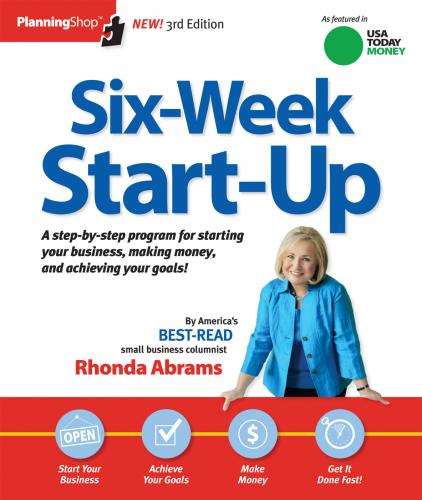“AAA, Inc., is a spunky, imaginative food products and service company aimed at offering high-quality, moderately priced, occasionally unusual foods made with only natural ingredients. We view ourselves as partners with our customers, our employees, our community, and our environment, and we take personal responsibility in our actions toward each. We aim to become a regionally recognized brand name, capitalizing on the sustained interest in southwestern and Mexican food. Our goals are moderate growth, annual profitability, and maintaining our sense of humor.”
Describe the following in one sentence:
|
|
|
|
|
|
|
|
|
|
Now combine these sentences into one comprehensive statement. You will revisit and rewrite it several times, but you’ll need a succinct business description for your business plan, investors, employees, and others, so get something on paper now.
Your concept should be strong in at least one area. If it isn’t, you should ask yourself how your company will be truly competitive.
Outline specifics
OK, so you have your inspiration, and you’ve seen an opportunity in the market...now how do those translate into your particular business concept? Exactly what are you going to sell? To whom? How?
The “Basic Business Description” worksheet on page 16 helps you outline the specifics of your business as you see them at this early point. You’ll be more successful if you have a clear concept of critical business aspects such as your target market, competition, industry, and so on.
Don’t worry if you aren’t entirely certain about the answers to your “Basic Business Description.” Fill in the answers anyway. You’ll use these specifics to guide the research you’ll do in Week Two, and you’ll continue to refine your business concept as you go along.
The late Eugene Kleiner, one of the world’s most successful venture capitalists, once told me that most companies don’t know what business they’re in. By this he meant that most businesspeople don’t understand the true basis on which they compete. Yes, they know how to make their products and invent their technologies, but they don’t really understand what makes their customers buy from them.
Today, defining a strategic position is as important for the proverbial “mom and pop” small business as it is for a high-technology company. It’s not enough to hang out a shingle that says, “I sell shoes,” or “I sell ecommerce technology.” You must have something that’s unique, that few others can offer, that makes your customers want to buy from you.
You have to understand how you meaningfully differentiate yourself from the competition—your strategic position in the marketplace.
Of course, the best strategic position is just to be better than the competition—the tennis racket you’ve invented enables players to hit harder, the graphic designs you create are more memorable. But those things are often a matter of judgment and hard to prove.
So, how do you develop a clear distinction between yourself and the competition? Your company’s strategic position can be based on:
The more you understand about your own company—and how you differ from others—the better able you are to compete.
Hewlett and Packard. Ben and Jerry. Great partnerships often make great companies. But just as often, bad partnerships destroy good companies.
Nothing affects your day-to-day work life more than the people you work with. Yes, work can be satisfying when you have challenging tasks, play with cool technology, or make lots of money. But whether or not you feel like getting out of bed in the morning can be greatly influenced by whom you’ll work with that day.
Partners not only affect your mood but your bottom line as well. They share, or may even control, ownership of your company. Spend time getting to know the business skills, attitudes, and aspirations of any potential partners—even if you’ve been friends or acquaintances for many years. Find out whether their goals, work style, and values fit yours.
If you are going to take on a partner, carefully consider why you want or need one. As you start your business, you may feel uncertain about being on your own, but that feeling of uncertainty may pass quickly. A partner will be around for a long, long time. Remember, partners own a piece of the business. Even if you bring in someone with only a minority interest as a partner, your future is tied to them.
Make certain your partnership expectations are realistic. Are your partners willing to work as hard as you? Do they bring the same level of talent or skill (although perhaps in a different area) as you? Do they have the same long-term view of where they want to be?
You have more leeway, legally, to ask questions of potential partners than of employees. Of course, make certain your potential partner is honest, but also examine their personal attitudes, how they handle stress, how much money they need and how soon, family or other demands on their time, and any other issues that may affect your working relationship.
The best way to take on a partner is with clear-cut definitions of responsibilities and authority. It’s nice to believe you will make every decision together, but that’s not realistic. Who, in the end, gets to call the shots? And be careful about going into business with a friend—often both the business and the friendship suffer.
